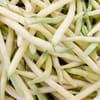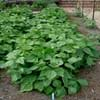Life Span
Annual
Perennial
Type
Vegetable
Fruit, Palm or Cycad, Tree
Origin
Central America, South America
Not Available
Types
Willow Leaf, Sieva Lima, Dixie Speckled
Not Available
Habitat
Humid climates, Subtropical climates, Warmer regions
Humid climates, sandy seeps, shores, tropical environments
USDA Hardiness Zone
6-11
5-12
AHS Heat Zone
Not Available
12-10
Sunset Zone
Not Available
H2
Habit
Vining/Climbing
Upright/Erect
Minimum Width
Not Available
Flower Color
White, Ivory
Yellow Brown
Flower Color Modifier
Bicolor
Bicolor
Leaf Color in Spring
Green
Green
Leaf Color in Summer
Green
Golden Green
Leaf Color in Fall
Green
Green
Leaf Color in Winter
Green
Green
Leaf Shape
Willow-shaped
Pinnate
Plant Season
Not Available
All year
Sunlight
Full Sun
Full Sun, Part sun
Type of Soil
Loam, Sand
Loam, Sand
The pH of Soil
Acidic, Neutral, Alkaline
Neutral, Slightly Acidic, Slightly Alkaline
Soil Drainage
Well drained
Well drained
Bloom Time
Indeterminate
Not Available
Where to Plant?
Container, Ground, Pot
Ground
How to Plant?
Seedlings
Seedlings, Transplanting
Plant Maintenance
High
Medium
Watering Requirements
Allow to dry out slightly between watering, Do Not over Water, Requires regular watering
Reduce watering during fall, Water daily during growing season, Water frequently while growing
In Summer
Not so frequently
Lots of watering
In Spring
Alternate Days
Moderate
In Winter
Drought Tolerant
Average Water
Soil pH
Acidic, Neutral, Alkaline
Neutral, Slightly Acidic, Slightly Alkaline
Soil Type
Loam, Sand
Loam, Sand
Soil Drainage Capacity
Well drained
Well drained
Sun Exposure
Full Sun
Full Sun, Part sun
Pruning
Prune to control growth
Cut limbs, Remove dead branches
Fertilizers
organic fertlizers
Nitrogen, Phosphorous, Potassium, slow-release fertilizers
Pests and Diseases
Aphids, Armyworm, Bean rust, Bean weevils, Corn earworm, Cucumber beetles, Curly top, Damping off, Darkling beetles, Earwigs, Fusarium root rot, Grasshoppers, Leafhoppers, Loopers, Lycaenid pod borers, Lygus bugs, Mosaic viruses, Nematodes, Powdery mildew, Saltmarsh caterpillar, Seedcorn maggot, Slugs, Snails, Spider mites, Stink bugs, Thripes, White mold, Whiteflies
Bud rot, Cadang-cadang, Coconut bug, Coconut foliar decay, Coconut scale, Ganoderma butt rot, Gray leaf blight, Lethal bole rot, Lethal yellowing, Mealybugs, nutfall, Red ring nematode, Stem bleeding disease
Plant Tolerance
Drought
Salt
Flowers
Insignificant
Yes
Flower Petal Number
Single
Single
Fragrant Flower
Not Available
No
Fragrant Fruit
Not Available
No
Fragrant Leaf
Not Available
No
Fragrant Bark/Stem
Not Available
No
Showy Bark
Not Available
Yes
Foliage Texture
Medium
Fine
Foliage Sheen
Matte
Matte
Self-Sowing
Not Available
No
Attracts
Not Available
Not Available
Allergy
Not Available
Abdominal pain, Anaphylaxis, cramps, Mouth itching, Nasal Congestion, Nausea, Runny nose, Skin irritation, Throat itching
Aesthetic Uses
Not Available
Beautification, Landscape Designing, Showy Purposes
Beauty Benefits
Not Available
Good for skin, Good for the Scalp, Hair Conditioner, Heals Damaged Hair, Makes Hair Silkier, Making cosmetics, Removes dandruff, Restores Hair Colour
Environmental Uses
Not Available
Air purification, No fertilizer, pesticides, or herbicides needed, Wildlife
Medicinal Uses
cholesterol-lowering, constipation, Digestive disorders, Fiber, Heart problems
Antibacterial, anti-cancer, Antifungal, Antioxidants, Antiviral, Digestion problems, Heart problems, Immunity, Skin Disorders, Weight loss
Part of Plant Used
Seeds
Whole plant
Other Uses
Used As Food
Air freshner, Animal Feed, Application in Furniture, Application in Handicrafts, For making oil for cosmetics, Oil is used for aromatherapy, Traditional medicine, Used as a nutritious food item, Used as a vegetable oil
Used As Indoor Plant
No
No
Used As Outdoor Plant
Yes
Yes
Garden Design
Edible, Herb, Vegetable
Edible, Feature Plant, Fruit Tree, Landscape, Tropical
Botanical Name
PHASEOLUS lunatus
Cocos nucifera
Common Name
Butter Bean, Lima Bean
Coconut Palm, coconut tree
In Hindi
सेम फली
नारियल का पेड़
In German
Limabohne
Kokospalme
In French
Haricot de Lima
Cocotier
In Spanish
Haba
El cocotero
In Greek
Γίγαντας
καρύδας δέντρο
In Portuguese
feijão-Lima
Coqueiro
In Polish
Lima Bean
Drzewo kokosowe
In Latin
Lima Bean
dolor ligno
Phylum
Tracheophyta
Magnoliophyta
Class
Magnoliopsida
Liliopsida
Family
Fabaceae
Aceraceae
Clade
Angiosperms, Eudicots, Rosids
Angiosperms, Commelinids, Monocots
Subfamily
Faboideae
Arecoideae
Number of Species
Not Available
Not Available
Importance of Lima Bean and Coconut Tree
Want to have the most appropriate plant for your garden? You might want to know the importance of Lima Bean and Coconut Tree. Basically, these two plants vary in many aspects. Compare Lima Bean and Coconut Tree as they differ in many characteristics such as their life, care, benefits, facts, etc. Every gardener must at least have the slightest clue about the plants he wants to plant in his garden. Compare their benefits, which differ in many ways like facts and uses. The medicinal use of Lima Bean is cholesterol-lowering, constipation, Digestive disorders, Fiber and Heart problems whereas of Coconut Tree is Antibacterial, anti-cancer, Antifungal, Antioxidants, Antiviral, Digestion problems, Heart problems, Immunity, Skin Disorders and Weight loss. Lima Bean has beauty benefits as follows: Not Available while Coconut Tree has beauty benefits as follows: Not Available.
Compare Facts of Lima Bean vs Coconut Tree
How to choose the best garden plant for your garden depending upon its facts? Here garden plant comparison will help you to solve this query. Compare the facts of Lima Bean vs Coconut Tree and know which one to choose. As garden plants have benefits and other uses, allergy is also a major drawback of plants for some people. Allergic reactions of Lima Bean are Not Available whereas of Coconut Tree have Abdominal pain, Anaphylaxis, cramps, Mouth itching, Nasal Congestion, Nausea, Runny nose, Skin irritation and Throat itching respectively. Having a fruit bearing plant in your garden can be a plus point of your garden. Lima Bean has no showy fruits and Coconut Tree has showy fruits. Also Lima Bean is not flowering and Coconut Tree is flowering. You can compare Lima Bean and Coconut Tree facts and facts of other plants too.





